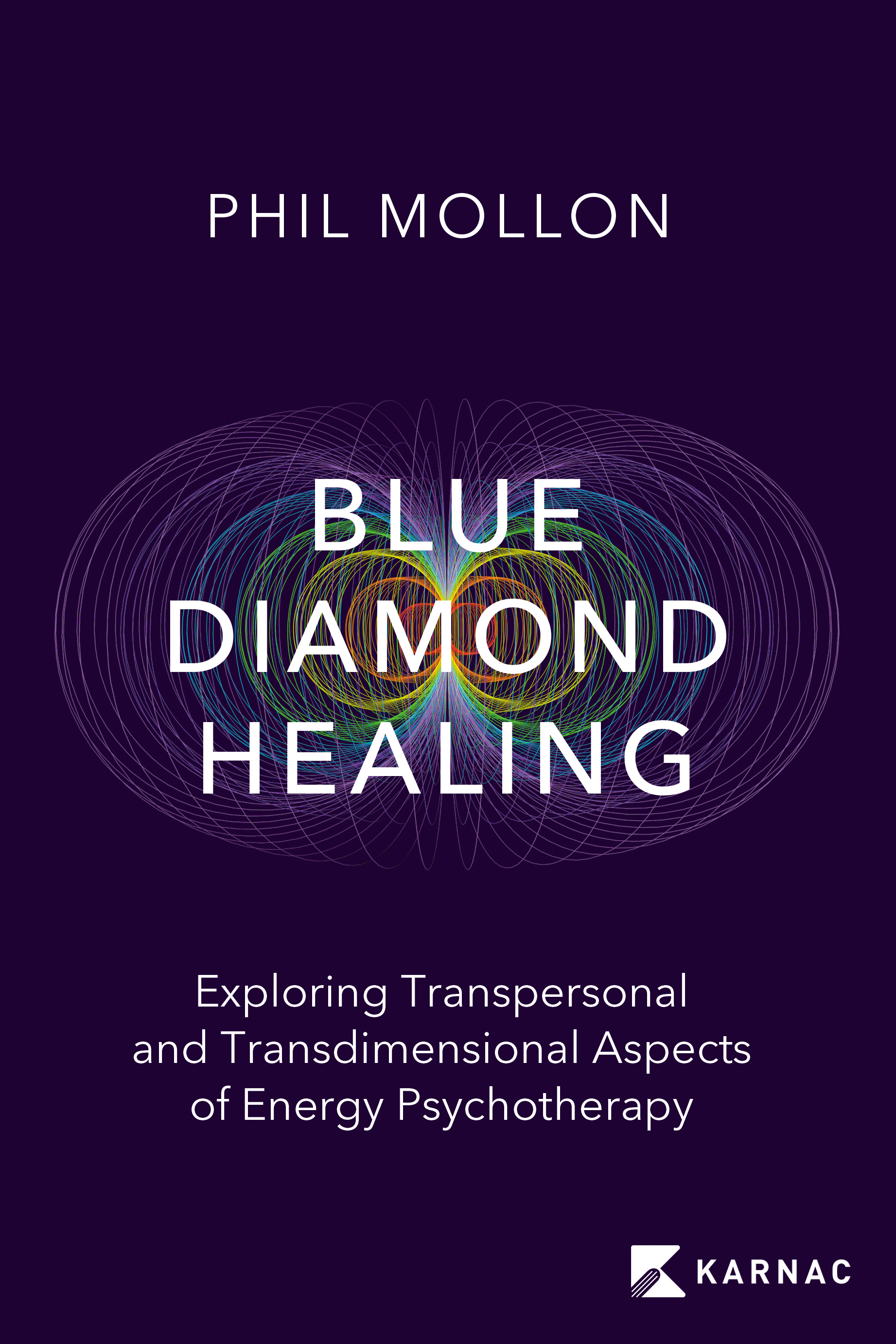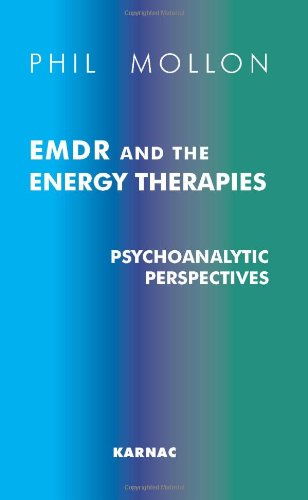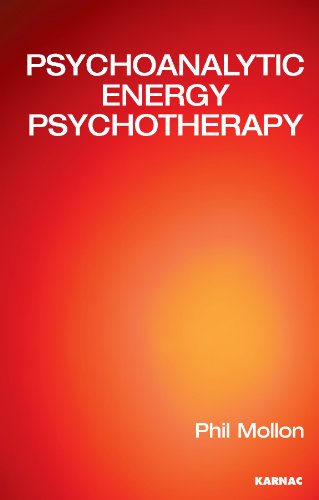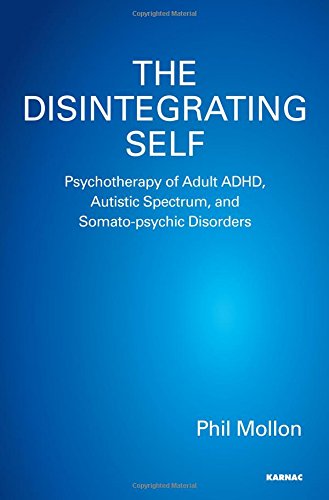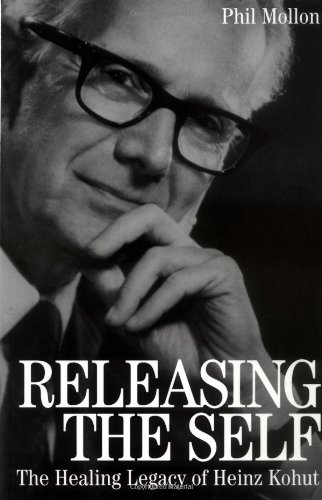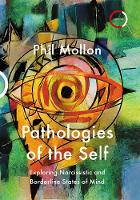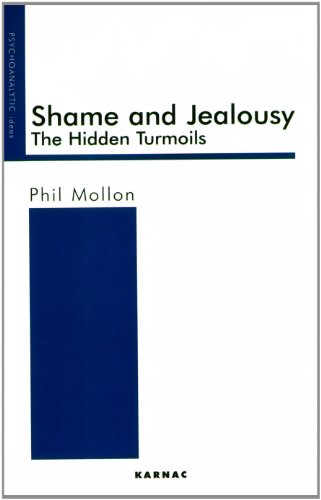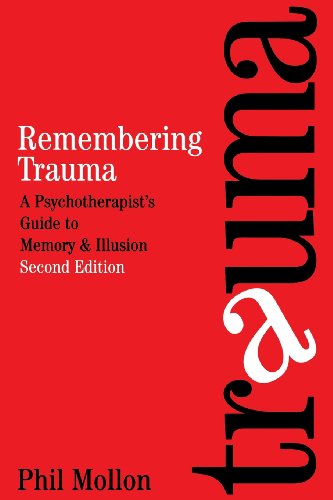Psychoanalytic Energy Psychotherapy
My new book, the outcome of a psychoanalyst's encounter with Thought Field Therapy, presents a detailed outline of how to work with the information field at the interface of body and mind. This field of energy and information appears to contain the encoding of trauma, emotional pain, dysfunctional cognition, and psychodynamic conflict. It is the deep energetic structure underpinning the material we address in psychoanalysis and cognitive therapy. By addressing this crucial realm, linking psyche and soma, emotional change can take place rapidly and easily.
Engaging the psyche and the soma
In my clinical practice of over thirty years, a combination of curiosity and dissatisfaction has kept me seeking better ways of alleviating psychological suffering. I have undergone some of the best trainings in psychotherapy and psychoanalysis available anywhere in the world - but have never felt these were entirely adequate for transforming the real and often severe traumas that have captured the minds and bodies of many of the patients I see in routine public sector clinical work. Talking therapies can even make such patients worse. It seems that work with the psyche alone, whilst often helpful, is not always sufficient.
One effective and well-established treatment for psychological trauma is Eye Movement Desensitisation and Reprocessing [Mollon 2005], which incorporates a bodily and sensory element. Towards the end of the 1990s I began to learn of other approaches which engage the body as well as the psyche. Some of these, which address the energy pathways of the meridians and the chakras, have been generically termed 'energy psychology'. Every practitioner I know who has taken the trouble to study and master some of these methods has, without exception, found them to be astonishingly effective as an adjunct to talking therapies. Their effects are rapid, deep, and gentle. However, their application to complex problems requires extensive knowledge and skill. My book is intended to transmit the clinical knowledge I have acquired from several years of immersion in energy psychology in relation to both psychoanalysis and cognitive therapy.
Origins of energy psychology
In the 1960s, a chiropractor in Detroit, George Goodheart, made certain clinical observations that led him to explore the use of muscle testing as an indicator of states of health and sickness - an approach that came to be termed Applied Kinesiology. He also discovered links between muscles, bodily organs, and the meridians of traditional Chinese medicine. Whilst much of this work was oriented towards physical manifestations of illness, a psychiatrist called John Diamond investigated the applications to emotional states. There are many complexities and subtleties in muscle testing, but two phenomena, with particular relevance to the psychological realm have become well-established: a muscle will test weak when a person states an untruth and also when a person experiences distress. The body's own response thus becomes a means whereby the deeper parts of a person, including their unconscious mind and other hidden areas, can communicate and respond to our conscious enquiry. Building on Goodheart's original observations, Diamond discovered links between emotions and particular meridians. He found ways of rapidly relieving troubling mental states through having the client stimulate meridians in certain ways, combined with uttering words specific to the meridian involved. Thus he demonstrated connections between the body, its meridians, emotions, and words - truly the language of the mind-body-energy system in all its depths and complexity.
A clinical psychologist called Roger Callahan, influenced by Diamond and others, was startled one day in 1979 to find that he had cured a patient (Mary Ford) of a long-standing phobia by asking her to stimulate a meridian for a few seconds. Mary had been troubled by a severe phobia of water for as long as she could remember. Using conventional cognitive and behavioural methods, as well as hypnotherapy, Callahan had enabled her to sit dangling her legs in his swimming pool - but she would still be in extreme discomfort. From his studies with Goodheart's group, Callahan was able to diagnose a problem in Mary's stomach meridian. Acting on a whim, one day he asked her to stimulate this meridian whilst thinking of water. She suddenly leapt up exuberantly, declaring that the anxiety she used to experience in her stomach had completely gone. It never returned. Neither Callahan nor anyone else had experienced such a thing before. Despite discouraging results on trying this with other patients, along with exhortations from his wife at the time to return to his more lucrative conventional therapy, Callahan continued to explore what he had stumbled across. Over the years he refined a procedure, involving precise sequences of meridians, which are effective with a high proportion of people suffering with anxiety, trauma, pain, and other forms of distress.
Along the way, Callahan discovered many profoundly important features of the mind-body energy system. Commonly a person's system contains hidden objections to recovery - the muscle test responds in the reverse, showing weak (saying 'no') to wanting to be free of the problem and strong (saying 'yes') to wanting to retain it. Under these conditions, recovery (probably by any form of therapy) cannot take place. We might compare this phenomenon with familiar psychoanalytic concepts, such as resistance, death instinct, perversion, and so forth. Fortunately, these forms of 'psychological reversal' are easily identified and resolved using Callahan's techniques.
Dr Callahan continues to develop and teach his approach, called Thought Field Therapy - this term referring to the informational energy field associated with a thought1 [www.tftrx.com & www.thoughtfieldtherapy.co.uk]. Others have drawn upon his work in various ways - including the popular but simplified variant known as Emotional Freedom Techniques [www.emofree.com], the subtle yet profound Tapas Acupressure Technique [www.tatlife.com], and the deep and thorough approach called Seemorg Matrix, developed by Jungian psychotherapist Asha Clinton [www.seemorg.com]2. In 1998, The Association for Comprehensive Energy Psychology was formed to promote research, organise conferences, and develop a code of ethics [www.energypsych.org].
Psychoanalytic Energy Psychotherapy [PEP]
All the energy psychology methods rapidly clear distress from the mind-body system. So why the need for the approach I have called Psychoanalytic Energy Psychotherapy? It is because the questions of how and where to apply the basic principles can be very complex. Just as the personality system may be complex, layered, and pervaded by conflict, so the associated energy system can be. We should not jettison existing knowledge - of psychodynamics, transference, attachment disturbance, trauma, automatic thoughts and core beliefs, neurobiology - all these remain important and are interwoven with the energy system. In PEP we listen at multiple levels - taking note of words, energy, and the body. The energy system reveals much that is new, including realms of crucial influence (such as inherited traumas) that we would never have suspected when working just with the psyche. I believe that energy psychology, in its myriad forms, is the future for effective psychotherapy.
References
Callahan, R. (2001). Tapping the Healer Within: Using Thought Field Therapy to Instantly Conquer your Fears, Anxieties, and Emotional Distress. New York: Contemporary Books.
Clinton, A. (2006). Seemorg Matrix Work: A new transpersonal psychotherapy. Journal of Transpersonal Psychology. 38.[1].
Diamond, J. (1979). Your Body Doesn't Lie. [Reprinted Enfield, UK: Eden Grove,1997].
Mollon, P. (2005). EMDR and the Energy Therapies: Psychoanalytic Perspectives. London: Karnac.
Mollon, P. (2008). Psychoanalytic Energy Psychotherapy - Inspired by Thought Field Therapy, EFT, TAT, and Seemorg Matrix. London: Karnac.
1 It is important to note that although Dr Callahan has a theory of how his method works, his therapy is not based upon, nor dependent upon, a theory but upon observations of what happens when certain procedures are followed.
2 Not all energy psychology approaches require muscle testing or other forms of physical contact with the client.
Engaging the psyche and the soma
In my clinical practice of over thirty years, a combination of curiosity and dissatisfaction has kept me seeking better ways of alleviating psychological suffering. I have undergone some of the best trainings in psychotherapy and psychoanalysis available anywhere in the world - but have never felt these were entirely adequate for transforming the real and often severe traumas that have captured the minds and bodies of many of the patients I see in routine public sector clinical work. Talking therapies can even make such patients worse. It seems that work with the psyche alone, whilst often helpful, is not always sufficient.
One effective and well-established treatment for psychological trauma is Eye Movement Desensitisation and Reprocessing [Mollon 2005], which incorporates a bodily and sensory element. Towards the end of the 1990s I began to learn of other approaches which engage the body as well as the psyche. Some of these, which address the energy pathways of the meridians and the chakras, have been generically termed 'energy psychology'. Every practitioner I know who has taken the trouble to study and master some of these methods has, without exception, found them to be astonishingly effective as an adjunct to talking therapies. Their effects are rapid, deep, and gentle. However, their application to complex problems requires extensive knowledge and skill. My book is intended to transmit the clinical knowledge I have acquired from several years of immersion in energy psychology in relation to both psychoanalysis and cognitive therapy.
Origins of energy psychology
In the 1960s, a chiropractor in Detroit, George Goodheart, made certain clinical observations that led him to explore the use of muscle testing as an indicator of states of health and sickness - an approach that came to be termed Applied Kinesiology. He also discovered links between muscles, bodily organs, and the meridians of traditional Chinese medicine. Whilst much of this work was oriented towards physical manifestations of illness, a psychiatrist called John Diamond investigated the applications to emotional states. There are many complexities and subtleties in muscle testing, but two phenomena, with particular relevance to the psychological realm have become well-established: a muscle will test weak when a person states an untruth and also when a person experiences distress. The body's own response thus becomes a means whereby the deeper parts of a person, including their unconscious mind and other hidden areas, can communicate and respond to our conscious enquiry. Building on Goodheart's original observations, Diamond discovered links between emotions and particular meridians. He found ways of rapidly relieving troubling mental states through having the client stimulate meridians in certain ways, combined with uttering words specific to the meridian involved. Thus he demonstrated connections between the body, its meridians, emotions, and words - truly the language of the mind-body-energy system in all its depths and complexity.
A clinical psychologist called Roger Callahan, influenced by Diamond and others, was startled one day in 1979 to find that he had cured a patient (Mary Ford) of a long-standing phobia by asking her to stimulate a meridian for a few seconds. Mary had been troubled by a severe phobia of water for as long as she could remember. Using conventional cognitive and behavioural methods, as well as hypnotherapy, Callahan had enabled her to sit dangling her legs in his swimming pool - but she would still be in extreme discomfort. From his studies with Goodheart's group, Callahan was able to diagnose a problem in Mary's stomach meridian. Acting on a whim, one day he asked her to stimulate this meridian whilst thinking of water. She suddenly leapt up exuberantly, declaring that the anxiety she used to experience in her stomach had completely gone. It never returned. Neither Callahan nor anyone else had experienced such a thing before. Despite discouraging results on trying this with other patients, along with exhortations from his wife at the time to return to his more lucrative conventional therapy, Callahan continued to explore what he had stumbled across. Over the years he refined a procedure, involving precise sequences of meridians, which are effective with a high proportion of people suffering with anxiety, trauma, pain, and other forms of distress.
Along the way, Callahan discovered many profoundly important features of the mind-body energy system. Commonly a person's system contains hidden objections to recovery - the muscle test responds in the reverse, showing weak (saying 'no') to wanting to be free of the problem and strong (saying 'yes') to wanting to retain it. Under these conditions, recovery (probably by any form of therapy) cannot take place. We might compare this phenomenon with familiar psychoanalytic concepts, such as resistance, death instinct, perversion, and so forth. Fortunately, these forms of 'psychological reversal' are easily identified and resolved using Callahan's techniques.
Dr Callahan continues to develop and teach his approach, called Thought Field Therapy - this term referring to the informational energy field associated with a thought1 [www.tftrx.com & www.thoughtfieldtherapy.co.uk]. Others have drawn upon his work in various ways - including the popular but simplified variant known as Emotional Freedom Techniques [www.emofree.com], the subtle yet profound Tapas Acupressure Technique [www.tatlife.com], and the deep and thorough approach called Seemorg Matrix, developed by Jungian psychotherapist Asha Clinton [www.seemorg.com]2. In 1998, The Association for Comprehensive Energy Psychology was formed to promote research, organise conferences, and develop a code of ethics [www.energypsych.org].
Psychoanalytic Energy Psychotherapy [PEP]
All the energy psychology methods rapidly clear distress from the mind-body system. So why the need for the approach I have called Psychoanalytic Energy Psychotherapy? It is because the questions of how and where to apply the basic principles can be very complex. Just as the personality system may be complex, layered, and pervaded by conflict, so the associated energy system can be. We should not jettison existing knowledge - of psychodynamics, transference, attachment disturbance, trauma, automatic thoughts and core beliefs, neurobiology - all these remain important and are interwoven with the energy system. In PEP we listen at multiple levels - taking note of words, energy, and the body. The energy system reveals much that is new, including realms of crucial influence (such as inherited traumas) that we would never have suspected when working just with the psyche. I believe that energy psychology, in its myriad forms, is the future for effective psychotherapy.
References
Callahan, R. (2001). Tapping the Healer Within: Using Thought Field Therapy to Instantly Conquer your Fears, Anxieties, and Emotional Distress. New York: Contemporary Books.
Clinton, A. (2006). Seemorg Matrix Work: A new transpersonal psychotherapy. Journal of Transpersonal Psychology. 38.[1].
Diamond, J. (1979). Your Body Doesn't Lie. [Reprinted Enfield, UK: Eden Grove,1997].
Mollon, P. (2005). EMDR and the Energy Therapies: Psychoanalytic Perspectives. London: Karnac.
Mollon, P. (2008). Psychoanalytic Energy Psychotherapy - Inspired by Thought Field Therapy, EFT, TAT, and Seemorg Matrix. London: Karnac.
1 It is important to note that although Dr Callahan has a theory of how his method works, his therapy is not based upon, nor dependent upon, a theory but upon observations of what happens when certain procedures are followed.
2 Not all energy psychology approaches require muscle testing or other forms of physical contact with the client.
By Phil Mollon
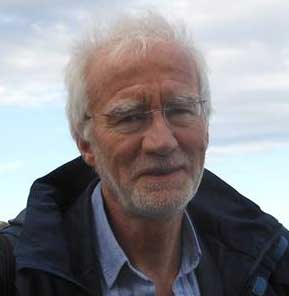
View more details for Phil Mollon
Psychoanalytic Energy Psychotherapy
- Paperback
Shame and Jealousy
- Paperback



